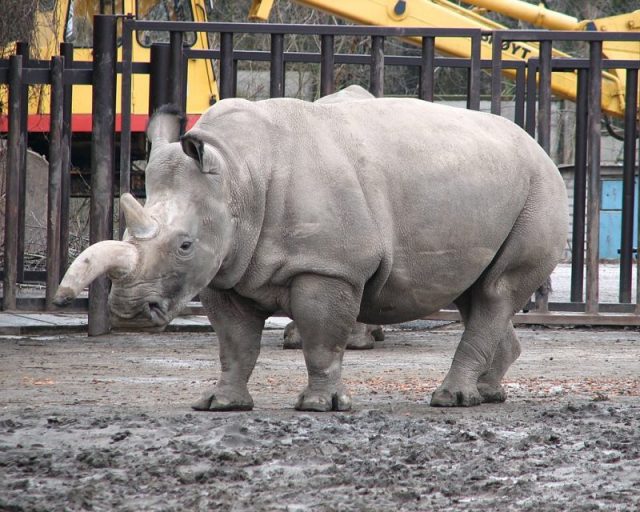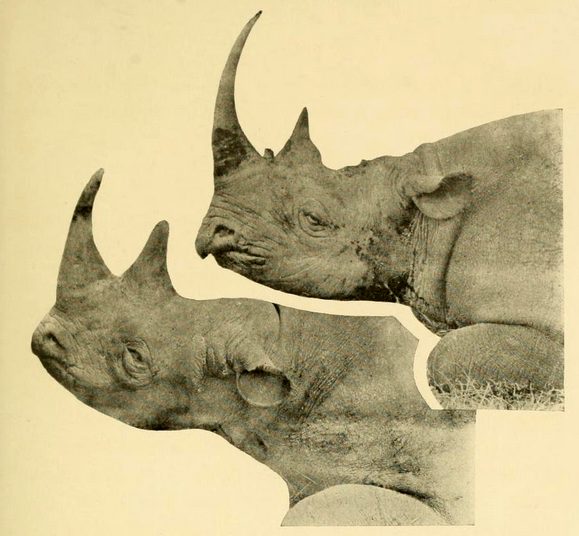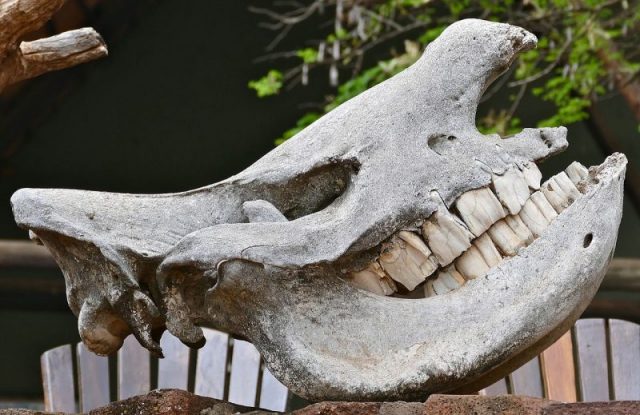Sudan, the “last male standing” of the world’s northern white rhino subspecies, has sadly died after struggling with age-related health issues during the last couple of months. Sudan was also dubbed “the most eligible bachelor,” and by the time of his death, at the age of 45, he had gained icon status. The animal was taken care of at Kenya’s Ol Pejeta Conservancy, but he recently suffered significant health complications. After the animal lost his ability to walk, his care-takers proceeded to have him euthanized on Monday, March 19, 2018.
The two females of the northern white rhino subspecies, all that remain alive, are also kept at Ol Pejeta Conservancy: Sudan’s daughter, Najin, and his granddaughter, Fatu. In the past few years, especially since Sudan remained the last male of its kind, experts sought different ways to help Sudan father a newborn before it was too late, but the efforts failed.
For most of his life, Sudan had been kept in captivity, which is how he reached his extensive age, comparable to 90 human years in longevity. He was captured in the country of Sudan, at a relatively young age, after which he had reportedly been taken to the Czech Republic, where he was kept at the Dvůr Králové Zoo for many years. As the northern white rhino was officially declared extinct several years back, Sudan was transferred back to the Kenya-based sanctuary, where he lived with the other last remaining members of the subspecies.

Recent decades have seen an alarming decline in the general rhino population, although back in the day, hundreds of thousands, if not millions, of rhinos freely roamed different African countries such as Chad, Sudan, and Uganda. Sadly, these animals have suffered from the attacks of poachers, for whom the horn of the rhino makes a lucrative score.
In the case of the northern white rhino, the last time any members were seen outside of captivity was more than a decade ago. Now this rhino can no longer be spotted anywhere in the wild. As one of the very last three representatives of the northern white rhino, Sudan had been under constant watch at the special sanctuary where he passed the final years of his life.
At the end of February and beginning of March, Ol Pejeta Conservancy alarmed the world with reports that Sudan’s health has been worsening due to old age, saying that Sudan’s future “is not looking bright.” The sickly animal had suffered from two subsequent infections on one of his back legs by that point. The news of Sudan’s deteriorating health synchronized with the international observance of World Wildlife Day, on March 3rd, which annually celebrates wild animals and raises awareness on endangered species.

Breeding efforts between Sudan and the last two remaining females have been attempted in the past but without results, apparently. That has been due to the low sperm count in the case of Sudan, but also the female rhinos have been facing reproduction difficulties. Fatu is not fertile, and Najin had not been able to withstand the hardship of breeding attempts.
With not too many options left, scientists considered various unorthodox measures to prevent this specific rhino subspecies from becoming totally instinct.
Experts reviewed possibilities such as using new stem-cell tech gadgets for producing an embryo of a northern white rhino that would then be carried by a surrogate, the Smithsonian writes. Using such an option might have meant producing an animal hybrid of northern white rhino and another rhino subspecies. Another alternative might be producing a clone.

The fact that there is no existent northern white rhino in the wild, but now only the two of its last kind at Ol Pejeta, means that, formally, the northern white rhino has been erased from the list of existing species. Challenges with preserving the rhino are not limited only to the northern white rhino, however. All subspecies of the rhino are under threat. Conservationists agree that to preserve the rhino family, the threat of poachers should be eliminated.
Read another story from us: Wisdom, the world’s oldest known albatross, is still breeding at age 67
Sudan helped raise awareness on this pressing issue after he gained popularity last year–he reportedly ended up having a profile on the popular dating app Tinder. Principally, this was done for a fund-raising campaign to develop new reproductive technology to save the rhinos.
“Despite his later inability to breed, there is no denying that he now goes down as the most prolific rhino ambassador in history,” wrote the Ol Pejeta Conservancy in the statement announcing Sudan’s death.
